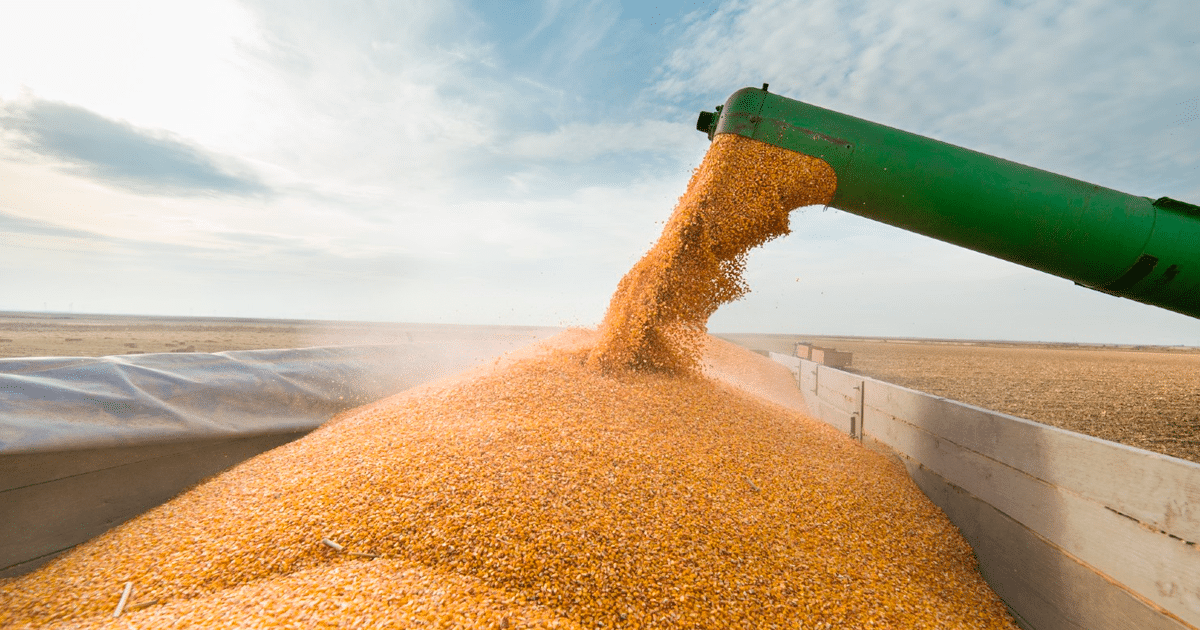
China set a new grain production target for the year 2025, aiming to reach about 700 million metric tons, as the government announced on Wednesday.
The country also significantly expanded its budget for agricultural inventories, reinforcing measures to ensure food safety in the face of increasing commercial and geopolitical tensions.
In 2024, China imported more than 157 million grain and soy metric tons, consolidating itself as the world’s largest importer of these products.
However, the country seeks to reduce its dependence on suppliers such as the United States and Brazil, which represent the main sources of their agricultural imports.
The revised goal of grain production to 2025 is an update of the previous goal of 650 million tons, established for 2024. This increase occurs after a record harvest of 706.5 million tons last year.
In addition, the 2025 budget for grain stock, edible oils and other materials was raised by 6.1% over the previous year, reaching 131.66 billion yuns, equivalent to US $ 18.12 billion.
Another 54.05 billion yuns were allocated to subsidies for agricultural insurance awards, aiming to strengthen national production.
In a report by the National Commission for Development and Reform, the Chinese government stated that the country has the necessary basis to achieve these goals through a strategy focused on efficient agricultural land management, increased technology application and continuous strengthening of the ability to ensure food safety.
According to Even Pay, agricultural analyst at Trivium China, the 2025 goal can be considered modest, given the exceptional performance of the previous year.
However, China has even more ambitious plans to increase production by 50 million tons by 2030, which would result in a harvest of approximately 745 million tons.
In addition, the country has intensified its efforts to support sectors such as cattle and dairy, which have faced challenges due to over -supply problems.
A report also pointed out that China will advance in the construction and modernization of storage facilities for grain, cotton, sugar, meat and fertilizers, as well as improving the connectivity of these facilities.
Oxford Global Society researcher Genevieve Donnellon-May stressed that the increase in inventory budget is part of a wider strategy of China to prevent food reserves from falling below a minimum level.
This movement reflects Beijing’s efforts to prepare for a possible prolonged trade war with the United States, as well as increasingly complex geopolitical challenges.
The increase in food security protection measures arises amid an intensification of China’s commercial disputes.
In addition to the US tariff embargoes, the country has started investigations into imports of pork and dairy products from the European Union and Canada Canola imports, related to disputes on electric vehicle tariffs in China.
In total, China’s agricultural imports showed an 8% drop in 2024, totaling US $ 215 billion, according to customs data.
As part of its strategies to reduce imports of imports, China has encouraged more sustainable agricultural practices, including the use of low protein alternative feed, such as canola or cotton lump, for animal feed, thus reducing the demand for imported grains.
China has also announced that it will increase agricultural insurance coverage for soybeans, including total cost and production income insurance. This incentive aims to stimulate farmers to plant more soy, one of the most demanded agricultural products in the country, which China depends to supply 80% of its consumption.
In addition, the Chinese government has revealed plans to expand the cultivation of oilseeds and stabilize the production of other products such as sugar, cotton and natural rubber.
The improvement of grain pricing policies is also on the government’s agenda, including the implementation of a minimum purchase price system for rice and wheat, to ensure the stability of the domestic market.
These measures reflect a search for China for greater self -sufficiency in the agricultural sector, facing economic and political challenges that affect global food trade.
Source: https://www.ocafezinho.com/2025/03/05/china-aumenta-meta-de-producao-de-graos-e-expande-orcamento-de-estoques-agricolas/

